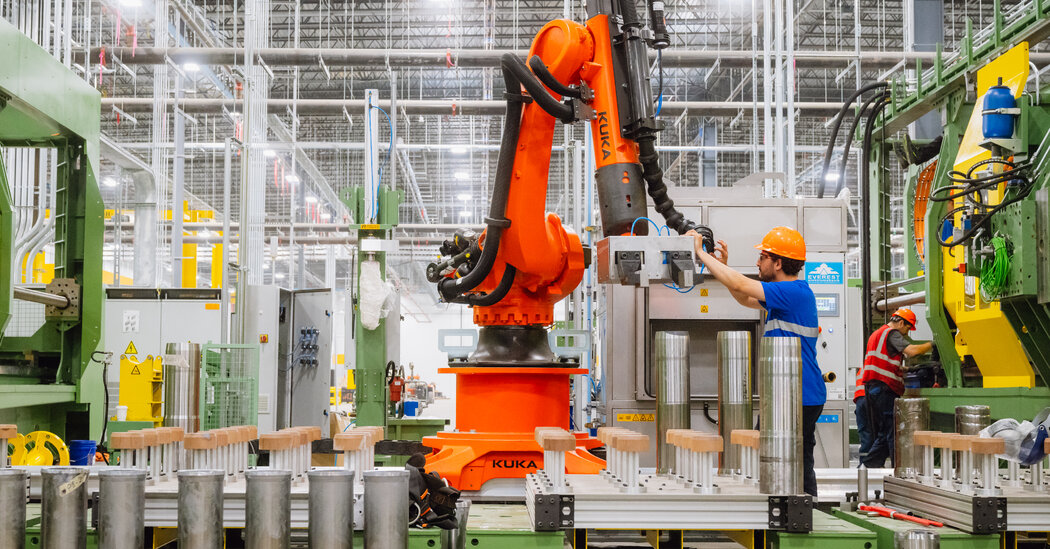In a warehouse off Lyndon B. Johnson Freeway in an industrial area outside Dallas, the future of American military ammunition production is coming online.
Here, in the Pentagon’s first new major arms plant built since Russia invaded Ukraine, Turkish workers in orange hard hats are busy unpacking wood crates stenciled with the name Repkon, a defense company based in Istanbul, and assembling computer-controlled robots and lathes.
The factory will soon turn out about 30,000 steel shells every month for the 155-millimeter howitzers that have become crucial to Kyiv’s war effort.
. . .
To keep Ukraine’s artillery crews supplied, the Pentagon set a production target last year of 100,000 shells per month by the end of 2025. Factories in Scranton and Wilkes-Barre, Pa., together make about 36,000 shells per month. The new General Dynamics facility in Mesquite, Texas, will make 30,000 each month once it reaches its full capacity.



Ukraine’s effort heavily relies on artillery, which accounts for a substantial portion of battlefield casualties. Ukrainian forces require around 75,000 artillery shells per month just to hold their current positions, and potentially double that amount for offensive operations. In contrast, Russia is capable of firing approximately 300,000 shells monthly, supported by both domestic production and imports from North Korea.
Interestingly, South Korea has also become a key player in supplying artillery ammo, agreeing to transfer 300,000 155mm shells to the U.S., which in turn helped replenish stocks sent to Ukraine in 2023.
Can South Korean 105-Millimeter Ammunition Rescue Ukraine?.
How weapons from Western allies are strengthening Ukraine’s defence against Russia.
How’s the crap nork arty ammo doing?
Adequately for the crappy old Soviet artillery the Russians have.
But isn’t it unethical to import weapons from North Korea? 🙃